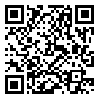Volume 15, Issue 7 (9-2015)
Modares Mechanical Engineering 2015, 15(7): 248-260 |
Back to browse issues page
Download citation:
BibTeX | RIS | EndNote | Medlars | ProCite | Reference Manager | RefWorks
Send citation to:



BibTeX | RIS | EndNote | Medlars | ProCite | Reference Manager | RefWorks
Send citation to:
Shafiee A, Ahmadian M T, Hoursan H, Hoviat Talab M. Effect of linear and rotational acceleration on human brain. Modares Mechanical Engineering 2015; 15 (7) :248-260
URL: http://mme.modares.ac.ir/article-15-3726-en.html
URL: http://mme.modares.ac.ir/article-15-3726-en.html
Abstract: (5188 Views)
Traumatic brain injury (TBI) has long been known as one of the most unspecified reasons for death around the world. This phenomenon has been under study for many years and yet questions remain due to its physiological, geometrical and computational complexity. Because of the limitations in experimental study on human head, the finite element human head model with precise geometric characteristics and mechanical properties is essential. In this study, the visco-hyperelastic parameters of bovine brain are extracted from experimental data and finite element simulations which are validated by experimental results. Then a 3D human head including brain, skull, and the meninges is modeled using CT-scan and MRI data of a 30-years old human. This model is named “Sharif University of Technology Head Trauma Model (SUTHTM)”. After validating SUTHTM, the model is then used to study the effect of G acceleration. Damage threshold based on consciousness in terms of acceleration and time duration is developed using HIC and Maximum Brain Pressure criteria. Results revealed that Max. Brain Pressure ≥ 3.1 KPa and HIC ≥ 30 are representative of loss of consciousness. Also, 3D domains for the loss of consciousness based on Max. Brain Pressure and HIC criteria are developed.
Keywords: Traumatic Brain Injury (TBI), Finite element analysis (FEA), Visco-Hyperelastic, Acceleration, Loss of Consciousness
Article Type: Research Article |
Subject:
Biomechanics
Received: 2015/04/27 | Accepted: 2015/05/6 | Published: 2015/06/6
Received: 2015/04/27 | Accepted: 2015/05/6 | Published: 2015/06/6
| Rights and permissions | |
 |
This work is licensed under a Creative Commons Attribution-NonCommercial 4.0 International License. |







